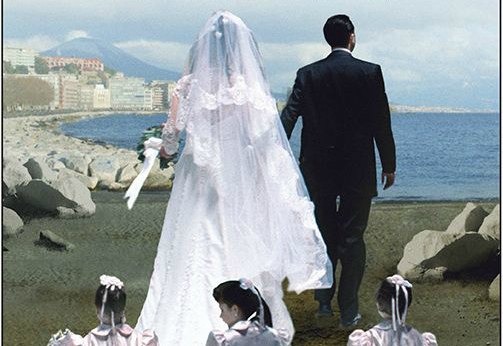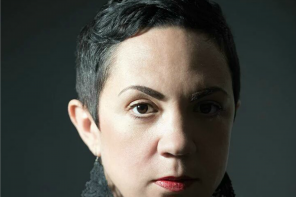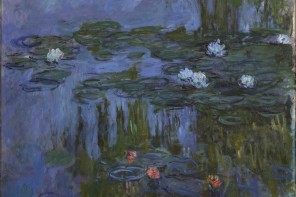Italy has an old and rich literary heritage acknlowledged all over the world. However, Italian literature is not all about Dante, Alessandro Manzoni and Umberto Eco, just to mention a few. To understand better Italy with a female point of view, you should check this list.
Elena Ferrante (1943-)
Everybody is still wondering who hides behind this pen name, but even though her/his identity is unknown we believe she is a woman. Her works conquered many countries, including the UK, and as it has recently been announced that the so-called ‘Neapolitans novels‘ are set to be adapted for a TV series. The internationally acclaimed four-part book series tells the lifelong friendship of two girls from a poor Naples neighbourhood during six decades. The mysterious novelist, who has been writing since 1992, explained that”Books, once they are written, they no need of their authors.” Maybe she is right, but her readers would really be delighted her identity to be unveiled. For a brief video on Elena Ferrante click here.
Elsa Morante (1912-1985)
Considered one of the most important novelists after the Second World War, she was part of the literary club of that period. In fact, her friends were writer Pier Paolo Pasolini, director Bernardo Bertolucci and poet and writer Umberto Saba, among many others. She also married and then divorced the novelist Alberto Moravia. A strong woman who, in her early twenties,was economically independent, despite the standard at that time was very different. Thanks to writer Natalia Ginzburg in 1948 she published her first novel, House of Liars. Her second work, Arturo’s Island, won the Strega Prize. Her novels, permeated by her love for arts and books, are an example of the so-called Neorealism. An acclaimed author who gave to her audience masterpieces like ‘Aracoeli‘ and ‘History‘.
Grazia Deledda (1871-1936)
Nobel Prize for Literature in 1926, Grazia Deledda was the first Italian woman to receive this accolade. She started writing at an early age. In her novels she described her Native Sardinia ‘with depth and sympathy for human problems in general’, the reasons why she was awarded the Nobel Prize. After primary school, she took private lessons started writing short essays. When she was around 13, she came across a fashion magazine and sent them a short story, that was immediately published. Reeds in the Wind, probably her most popular novel, published in 1913, tells the story of the inhabitants of a small rural village with her typical love of the natural landscape and the folk culture of Sardinia.
Natalia Ginzburg (1916-1991)
Natalia Ginzburg, neè Levi in 1916, was raised in Turin as her father, a renowned histologist born into an Italian Jewish family, took a job as a professor at the University of Turin. She has been living surrounded by intellectuals and her works are influenced by the experience of the holocaust. She won the Strega Prize with her novel Family Sayings, in which she traces the history of her family through their habits. Her novel Caro Michele was turned into a film directed by Mario Monicelli.
Dacia Maraini (1936-)
Daughter of an half-English ethnologist, she moved with her family to Japan and a few years later they were interned in a Japanese concentration camp from 1943 to 1946 for refusing to acnowledge Mussolini’s Repubblica di Salò. She described this horrible experience in her poetry collection called Devour Me Too. Dacia started writing short stories and in 1962 she published her first novel, The holiday. She also founded with other writers the Teatro del Porcospino in Rome. In these years she met the writer Alberto Moravia, who later would leave his wife Elsa Morante for her. Her novel The Silent Duchess (La lunga vita di Marianna Ucría) was awarded the Premio Campiello.
Oriana Fallaci (1929-2006)
The controversial writer, journalist and interviewer was a also political activist during World War II. She joined the Italian anti-fascist resistance movement called Giustizia e Libertà, part of the Resistenza, when she was young. She worked as war reporter in Vietnam, covering the Indo-Pakistani War, in the Middle East, and in South America. She received lot of public attention due to her controversial writings on islam and European Muslims, the principal topic of her famous novels The Rage and the Pride and The Force of Reason. Her obituary in The Guardian stated she was “notorious for her Islamophobia”.
Antonia Pozzi (1912-1938)
She began writing her first poems when she was a teenager. She had a relationship with her high school teacher, who seduced her for his passion for culture. She then studied philology at the University of Milan. She also visited the UK to learn English, while she keept writing and started taking photographs as well. In 1938 she poisoned herself and died in a field in the outskirts of Milan, leaving behind her diaries and a collection of poetry.












